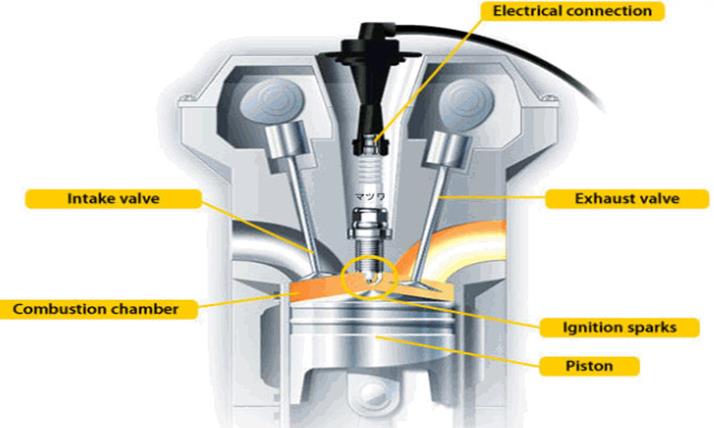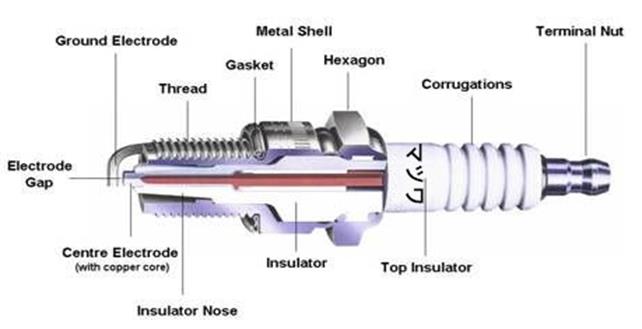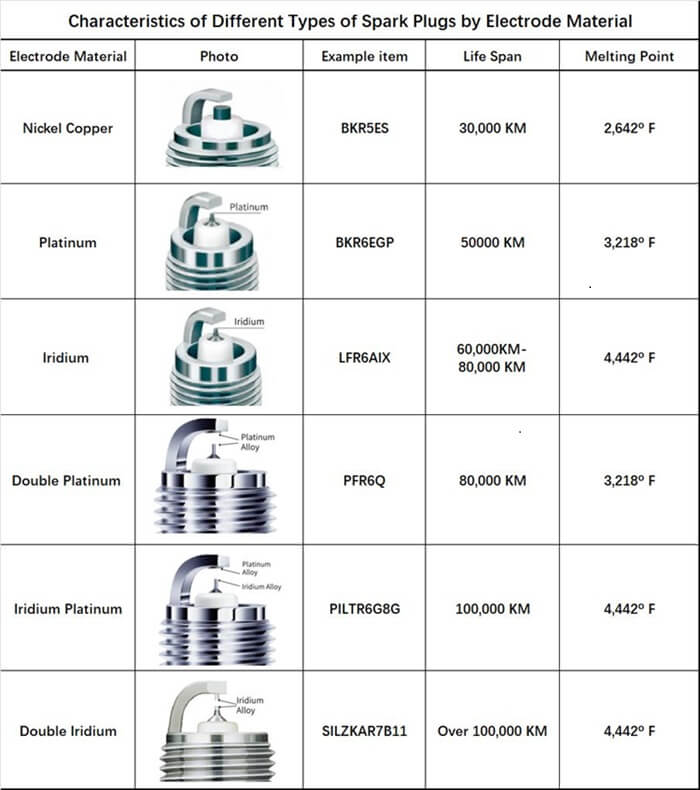A car spark plug is a critical part of an internal combustion engine. Its primary function is to ignite the air-fuel mixture and produce the spark within the engine's combustion chamber, which powers the engine and generate the necessary energy for a car to move.
So it works under harsh conditions of high temperature and high pressure.

A spark plug is made of terminal nut, insulator, center electrode, ground electrode (or side electrode), metal housing, seals and gaskets, etc. Here's a breakdown of the main components and the materials commonly used in spark plugs:

1.Terminal nut: This is where the spark plug wire or coil boot is attached. The terminal receives the high voltage current from the ignition coil.
2. Insulator: it is the most important part of a spark plug and serves to isolate the electrical charge and heat generated by the spark. It is typically made of a special ceramic material that can withstand high temperatures and electrical stress. Alumina (aluminum oxide) is a common ceramic material used for this purpose due to its excellent insulating properties and high thermal stability.
3. Center Electrode: it protrudes into the combustion chamber and generates the spark. It is usually made of a high-conductivity metal such as copper, nickel, platinum or iridium. Copper is commonly used in standard spark plugs due to its excellent electrical conductivity, while platinum and iridium are used for middle-high end vehicles for their superior durability and resistance to erosion.
4. Ground Electrode: It is integrated with the housing and opposites to the center electrode. Like the center electrode, it is typically made of a high-conductivity metal such as nickel or platinum.
5. Metal Housing: It surrounds the insulator and provides mechanical support and electrical grounding for the spark plug. It is usually made of steel.
6. Seals and Gaskets: Spark plugs often include seals and gaskets made of materials such as rubber or silicone to prevent leakage of combustion gases and engine fluids.
7. Hexagon: steel shell where a socket wrench fits for tightening or loosening the plug.
8. Corrugations or Ribs: It stops voltage from jumping to the hex head
Car Spark plugs vary in electrode material, number of ground electrode, and car fuel. There are normally 6 kinds of spark plugs by electrode material, that is, nickel copper spark plugs, platinum spark plugs, iridium spark plugs, double platinum spark plugs, iridium platinum spark plugs and double iridium spark plugs. And there are 4 kinds of spark plugs according to the number of ground electrodes, that is single ground electrode spark plugs, double ground electrodes spark plugs, triple ground electrodes spark plugs, four ground electrodes spark plugs. Car fuel means that is the car fueled by oil or by gas. So if the car is fueled by oil, it should use oil spark plugs, if fueled by gas, it should use gas spark plugs.
Now let’s take a look at the types of auto spark plugs by electrode material in detail. because this is what most buyers care about.
Nickel Copper Spark Plugs (or Nickel spark plugs):
They are also called standard spark plugs because nickel copper is the basic material for the center electrode. As nickel and copper have relatively low melting points (1,983º and 2,642º F, respectively), which means that the edge of these electrodes wears quickly, resulting in an increased gap in as little as 20,000 kilometers. So it has a short lifespan, somewhere around 30,000 kilometers. They are suitable for older and economic vehicles. For example, BKR5ES
Platinum Spark Plugs
Platinum plugs use a platinum disc that is soldered to the end of the center electrode, which allows the plug to last longer than a copper plug, retaining its edge better, which means better conductivity. The melting point of platinum is (3,218º F). So platinum spark plugs tend to run hotter, preventing fouling and buildup of deposits. And the lifespan of platinum spark plugs is around 50,000 kilometers. For example, BKR6EGP
Iridium Spark Plugs
This type of spark plug has iridium disc welded in the end of center electrode. Iridium is harder than platinum and has an even higher melting point (4,442º F), which allows these spark plugs to last about 20% longer than platinum spark plugs. Iridium spark plugs are designed to offer superior performance, longevity, and reliability compared to traditional spark plugs. They can work at least 60,000 kilometers when installed in naturally aspirated cars. See LFR6AIX
Double Platinum Spark Plugs
A double-platinum plug has a platinum disc on both the center electrode, and the side electrode. This created a plug that is very durable, lasting upwards of over 80,000 kilometers in naturally aspirated cars. But if installed in turbocharged vehicles, the life span will be a little shorter. PFR6Q is one of this type.
Iridium Platinum Spark Plugs
An iridium platinum plug means that there is iridium disc welded on the center electrode, and platinum disc on the side electrode. Usually this type of spark plugs are designed for turbocharged vehicles. If installed in naturally aspirated cars, the working life can be high as 100,000 kilometers. Check PILTR6G8G
Double Iridium Spark Plugs
Double Iridium spark plugs are the type which have iridium disc on both the center electrode, and the side electrode. They are designed to deliver the firepower necessary under any driving conditions, especially extreme heat or continual high-speeds, and can provide up to 4 times the normal life of service compared to a standard copper spark plug. For example, SILZKAR7B11
Here is a chart to summarize the 6 types of spark plugs.

Remarks: The life span may vary in different kinds of car engines. If the spark plugs are installed in turbocharged engines, it is suggested to check the spark plugs every 20,000 kilometers.
What is the heat range of a spark plug
The heat range of a spark plug refers to its ability to dissipate heat from the combustion chamber. It is a measure of how quickly the spark plug transfers heat from the tip into the cylinder head and cooling system. The heat range is important because it affects the spark plug's ability to avoid fouling (if too cold) or pre-ignition (if too hot).
Hot Spark Plugs: These have a longer insulator nose that retains more heat, making them better suited for low-speed or low-load conditions. They are used in engines where the plug temperature tends to be cooler.
Cold Spark Plugs: These have a shorter insulator nose that dissipates heat more quickly, making them ideal for high-performance or high-compression engines that operate at higher temperatures.
The correct heat range for a spark plug is typically specified by the vehicle manufacturer and can vary based on engine design, operating conditions, and specific modifications. Using a spark plug with the right heat range is crucial for optimal engine performance, efficiency, and longevity.